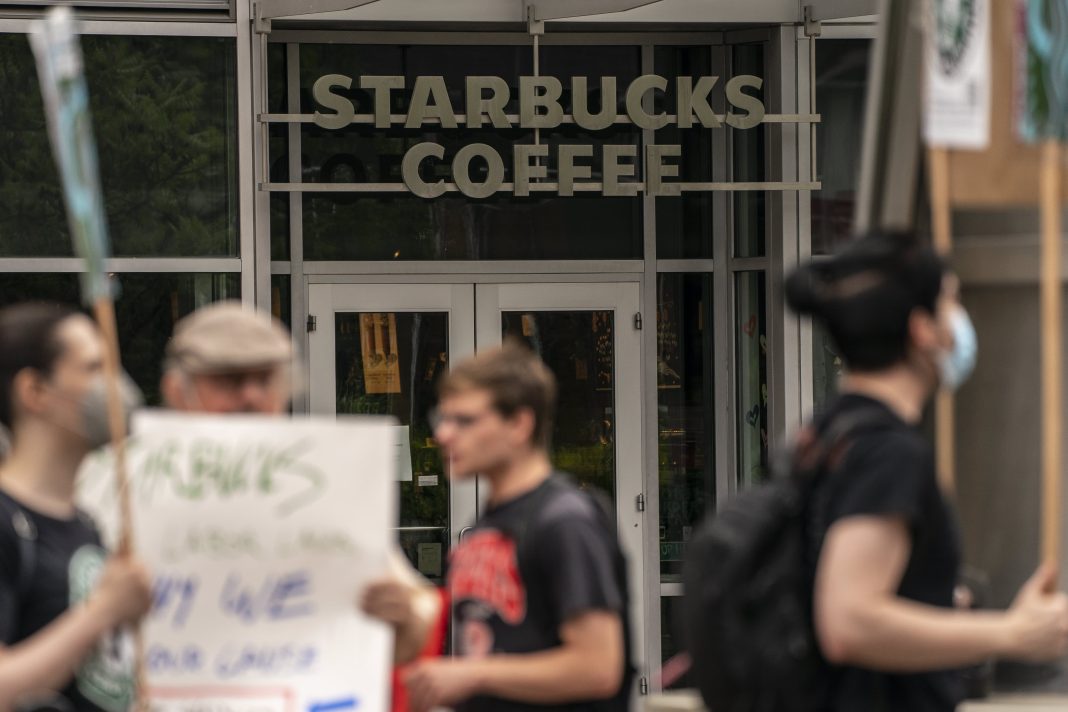In a significant turn of events for labor relations within the coffee industry, baristas at a Starbucks location in Bellingham, Washington, have made history by becoming the 500th store to join the Starbucks Workers United union as of July 2022. This milestone marks a pivotal moment not only for the workers involved but also for the broader movement advocating for labor rights across the United States.
Since the first Starbucks location voted to unionize in 2021, the momentum has surged, with over 11,000 baristas rallying behind the union’s cause. Lynne Fox, president of Workers United, aptly described this achievement as a powerful example of workers building their own power from the grassroots level. “Starbucks partners have boldly demanded a voice on the job,” Fox stated, emphasizing the need for strong contracts that encompass respect, living wages, racial and gender equity, and fair scheduling practices.
The journey toward unionization has not been a straightforward path. However, the collaborative spirit observed between the union and Starbucks management signals a potential shift in corporate labor relations. In February, both parties announced a joint commitment to engage in negotiations aimed at establishing a foundational framework for labor agreements. Since then, monthly meetings have taken place, culminating in the successful unionization of 100 additional locations in the past six months alone.
This evolving relationship is further underscored by comments from CEO Brian Niccol, who took the helm of the company in September. He expressed a commitment to bargaining in good faith, highlighting the importance of crafting a labor deal that respects the needs of both the employees and the company’s future. The proposed framework aims to serve as a foundational blueprint for collective bargaining agreements at individual locations, suggesting a move toward a more standardized approach to labor relations within the company.
The push for unionization is not merely about securing better pay or working conditions; it’s also about ensuring that baristas can effectively do their jobs and deliver a quality experience to customers. Representatives from the Bellingham location articulated their motivations in a heartfelt letter to Niccol, stating, “Starbucks’ ultimate success in rebuilding hinges on whether we as baristas have the support we need to do our jobs well.” This sentiment underscores the interconnectedness between employee satisfaction and customer experience—a crucial insight for any business aiming to thrive in a competitive market.
Despite these advancements, the dialogue surrounding labor rights at Starbucks continues to evoke mixed reactions. Some industry experts argue that while unionization can lead to improved working conditions, it may also impose challenges on operational flexibility and profitability, particularly in a fast-paced retail environment. Others assert that empowering workers through collective bargaining can ultimately enhance a company’s reputation and customer loyalty.
As the negotiations progress, the unfolding narrative at Starbucks serves as a case study in the broader landscape of labor relations in America. It highlights the growing recognition of workers’ rights and the vital role of unions in advocating for equitable treatment in the workplace. With over 11,000 baristas now part of the union, the call for systemic change resonates louder than ever, suggesting that this movement is not merely a fleeting trend but a fundamental shift in how workers perceive their roles within the corporate structure.
In conclusion, the developments at Starbucks represent a significant chapter in the ongoing conversation about labor rights and the future of work. As baristas continue to organize and advocate for their rights, their journey reflects a broader societal movement towards equity and respect in the workplace. As we look to the future, it will be essential to monitor how these negotiations unfold and what they will mean for workers across various industries.


